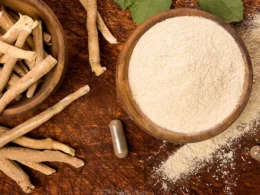With regards to quality food varieties, sauerkraut frequently beat the rundown. In any case, did you had any idea about that not all sauerkraut is made equivalent? If you have any desire to get the most probiotics from your sauerkraut, you really want to know what to search for. In this article, we will investigate what makes sauerkraut extraordinary, the advantages of probiotics, and how to pick the best sauerkraut for your wellbeing. Whether you’re a fledgling or a foodie, we take care of you!
What Is Sauerkraut?
Sauerkraut is matured cabbage. The maturation cycle happens when cabbage leaves are destroyed, salted, and afterward left to sit in their own juices. This cycle makes a tart, crunchy side dish that isn’t just delectable yet in addition loaded with medical advantages!
The Fermentation Process
Fermentation is like magic for food! Here’s how it works:
- Shredding: Cabbage is chopped into small pieces.
- Salting: Salt is added to help draw out the water.
- Fermenting: The mixture is left to sit in a cool, dark place for several days to weeks. Good bacteria thrive and multiply during this time.
The result is a delicious and nutritious dish packed with probiotics!
What Are Probiotics?
Probiotics are small living microorganisms, frequently alluded to as “great” microscopic organisms. They are advantageous for our stomach wellbeing and generally speaking prosperity. Here are a few central issues about probiotics:
- Supports Digestive Health: Probiotics help balance the bacteria in your gut, making digestion smoother.
- Boosts Immune System: A healthy gut can strengthen your immune system, helping your body fight off illnesses.
- Enhances Nutrient Absorption: Probiotics help your body absorb nutrients from food more effectively.
By including sauerkraut in your diet, you can boost your intake of these friendly bacteria!
Why Sauerkraut for Probiotics?
Sauerkraut is a superb wellspring of probiotics since it is matured utilizing a characteristic interaction. This implies it contains live societies that can help your stomach. In any case, not all sauerkraut is loaded with probiotics. How about we plunge into what makes the best sauerkraut for probiotics.
Key Factors in Choosing Sauerkraut for Probiotics
- Raw and Unpasteurized
Look for sauerkraut that is raw and unpasteurized. Pasteurization kills the beneficial bacteria, so you want the real deal! - Organic Ingredients
Choose organic sauerkraut made from fresh, high-quality cabbage and natural ingredients. This ensures you are consuming the best nutrients without harmful additives. - Lactobacillus Strains
Different types of beneficial bacteria can be found in sauerkraut. Look for products that contain specific strains of Lactobacillus, which are known for their probiotic benefits. - Homemade vs. Store-bought
Homemade sauerkraut can be a great option because you control the ingredients and fermentation process. However, many store-bought brands also offer excellent probiotic options. - No Additives or Preservatives
Check the ingredient list and avoid brands that include preservatives or artificial flavors. Fresh and simple is best!
Top Sauerkraut Brands for Probiotics
Choosing the right brand can make all the difference. Here are some popular sauerkraut brands known for their probiotic content:
| Brand Name | Probiotic Content | Notes |
| Bubbies | Lactobacillus | Raw and unpasteurized; traditional flavor |
| Farmhouse Culture | Multiple strains | Organic; various flavor options available |
| Wildbrine | Probiotic-rich | Unique flavors; uses a variety of vegetables |
| Cabbage Couture | Raw and organic | Small-batch fermentation; great for gut health |
Making Sauerkraut at Home
- If you’re feeling adventurous, making your own sauerkraut can be a fun and rewarding experience! It’s a simple process that requires just a few ingredients and a bit of patience.
- To get started, you’ll need one medium head of green cabbage and a tablespoon of sea salt. Begin by shredding the cabbage into thin strips. In a large bowl, mix the cabbage with the salt, massaging it until it releases its juices.
- Once the cabbage is ready, pack it tightly into a clean jar, ensuring the juices cover the cabbage completely. Seal the jar and leave it at room temperature for 1-4 weeks to ferment, tasting it occasionally to reach your desired flavor.
- After it has fermented, store the sauerkraut in the fridge to slow down the fermentation process. Not only is homemade sauerkraut delicious, but it’s also rich in probiotics, making it a healthy addition to your meals!
Health Benefits of Sauerkraut
In addition to being a great source of probiotics, sauerkraut has several other health benefits:
- Rich in Nutrients: Sauerkraut is low in calories and packed with vitamins C and K, making it a healthy addition to your diet.
- Aids Digestion: The fiber content in sauerkraut promotes healthy digestion and can help prevent constipation.
- May Improve Mood: Some studies suggest that the gut-brain connection can influence mood, and consuming probiotics may help improve overall mental health.
How to Enjoy Sauerkraut
Now that you know the best sauerkraut for probiotics, let’s talk about how to enjoy it! Here are some fun ideas:
- As a Topping: Add sauerkraut to hot dogs, burgers, or sandwiches for a tangy crunch.
- In Salads: Mix sauerkraut into salads for added flavor and nutrients.
- In Soups: Stir sauerkraut into soups or stews for a delicious twist.
- On Its Own: Enjoy sauerkraut as a side dish with your meals.
Serving Suggestions
To make your sauerkraut even tastier, try these simple serving ideas:
- Mix with Avocado: Combine sauerkraut with mashed avocado on toast for a delicious breakfast.
- Add to Stir-Fries: Toss sauerkraut into stir-fries for an added zing.
- Pair with Cheese: Serve sauerkraut with cheese for a savory snack.
Frequently Asked Questions (FAQs)
1. What is the best way to store sauerkraut?
Store opened jars of sauerkraut in the refrigerator to keep it fresh. It can last for several months if kept sealed.
2. Can I eat too much sauerkraut?
While sauerkraut is healthy, eating too much can cause digestive upset for some people. Start with small amounts and see how your body reacts.
3. Does sauerkraut have to be refrigerated?
Yes, once opened, sauerkraut should be kept in the refrigerator to maintain its flavor and probiotics.
4. Can you freeze sauerkraut?
Freezing sauerkraut is possible, but it may change the texture. It’s best enjoyed fresh or stored in the fridge.
5. Is sauerkraut gluten-free?
Yes, sauerkraut is naturally gluten-free, making it a great option for those with gluten sensitivities.
The Connection Between Probiotics and Gut Health
Understanding the relationship between probiotics and gut health is crucial. A balanced gut microbiome is key to good health. Sauerkraut, with its live cultures, can help maintain this balance. Here’s how:
- Promotes Good Bacteria: Probiotics in sauerkraut help keep harmful bacteria in check.
- Regulates Digestion: A healthy gut supports regular digestion and can alleviate issues like bloating and gas.
- Enhances Overall Wellness: A healthy gut can lead to better overall health, including improved mood and energy levels.
Why Choose Sauerkraut Over Other Probiotic Foods?
While many foods offer probiotics, sauerkraut stands out for several reasons:
- Easy to Make: It’s simple and affordable to make at home.
- Versatile Ingredient: It can be used in a variety of dishes.
- Delicious Flavor: The tangy taste of sauerkraut adds a unique flavor to meals.
Final Thoughts
Sauerkraut is more than just a tasty addition to your meals; it’s a powerhouse of probiotics that can enhance your health in many ways. By choosing the right type of sauerkraut and incorporating it into your diet, you can enjoy the numerous benefits it offers. So, the next time you reach for a condiment, consider the benefits of sauerkraut for your gut health!








